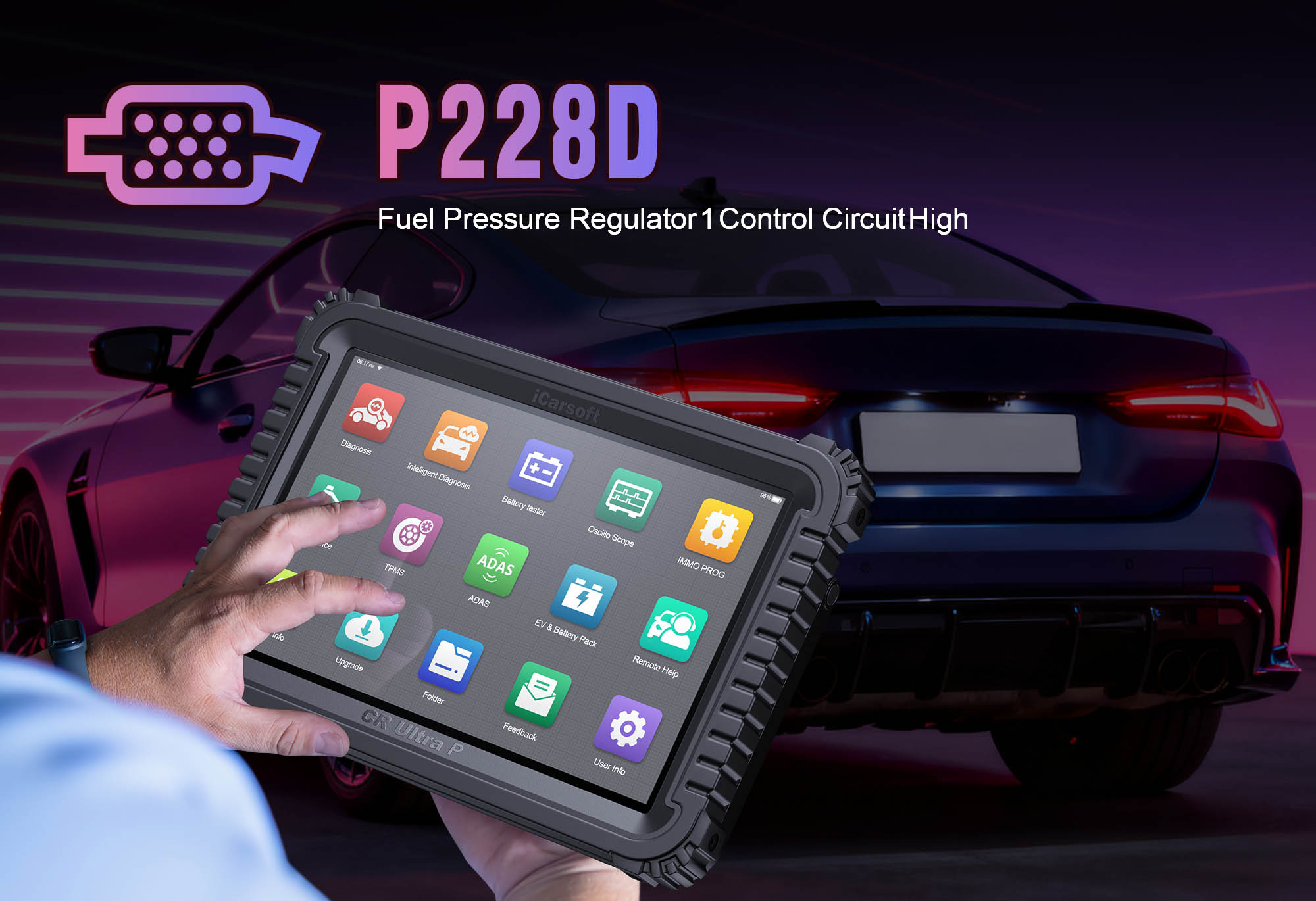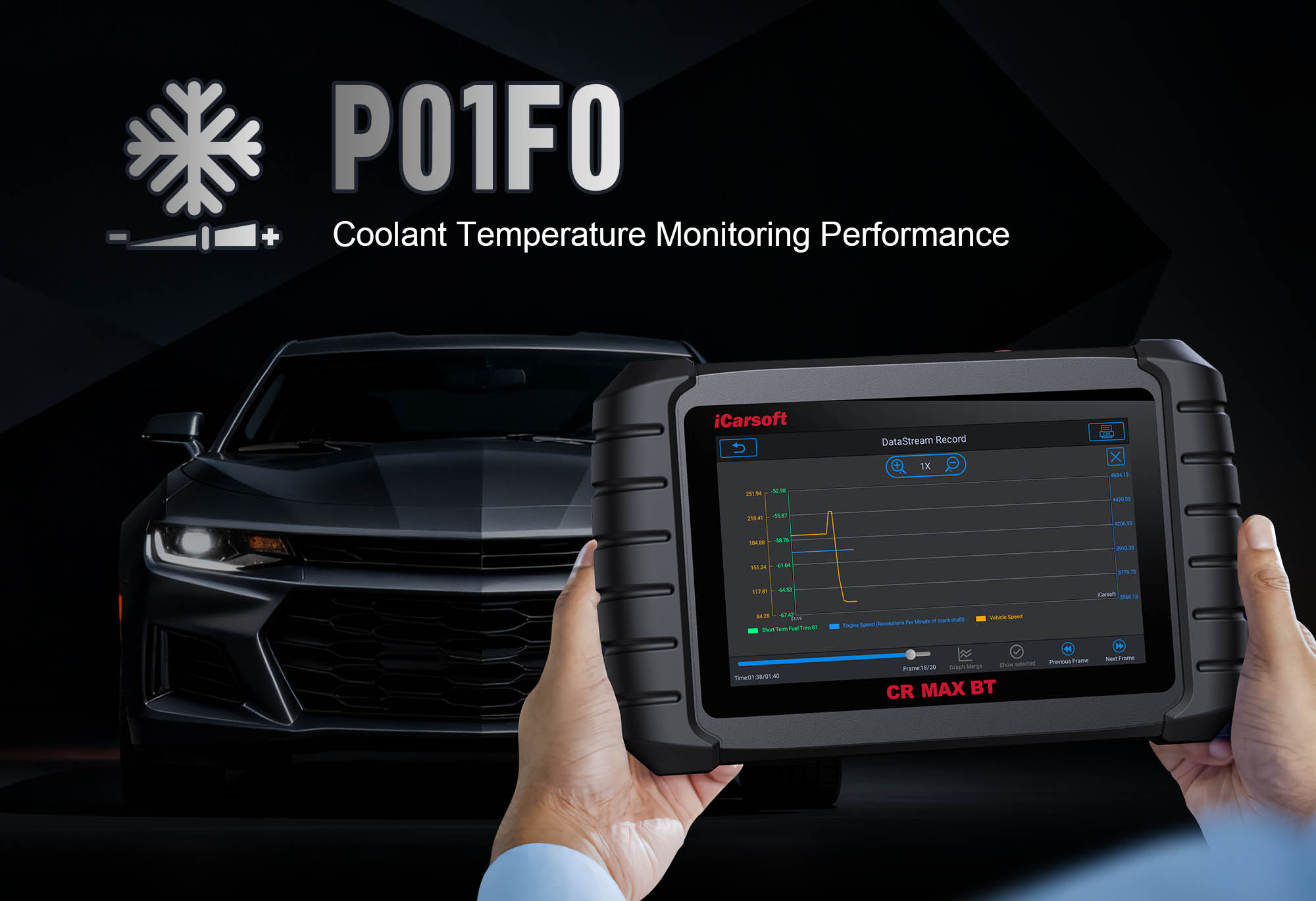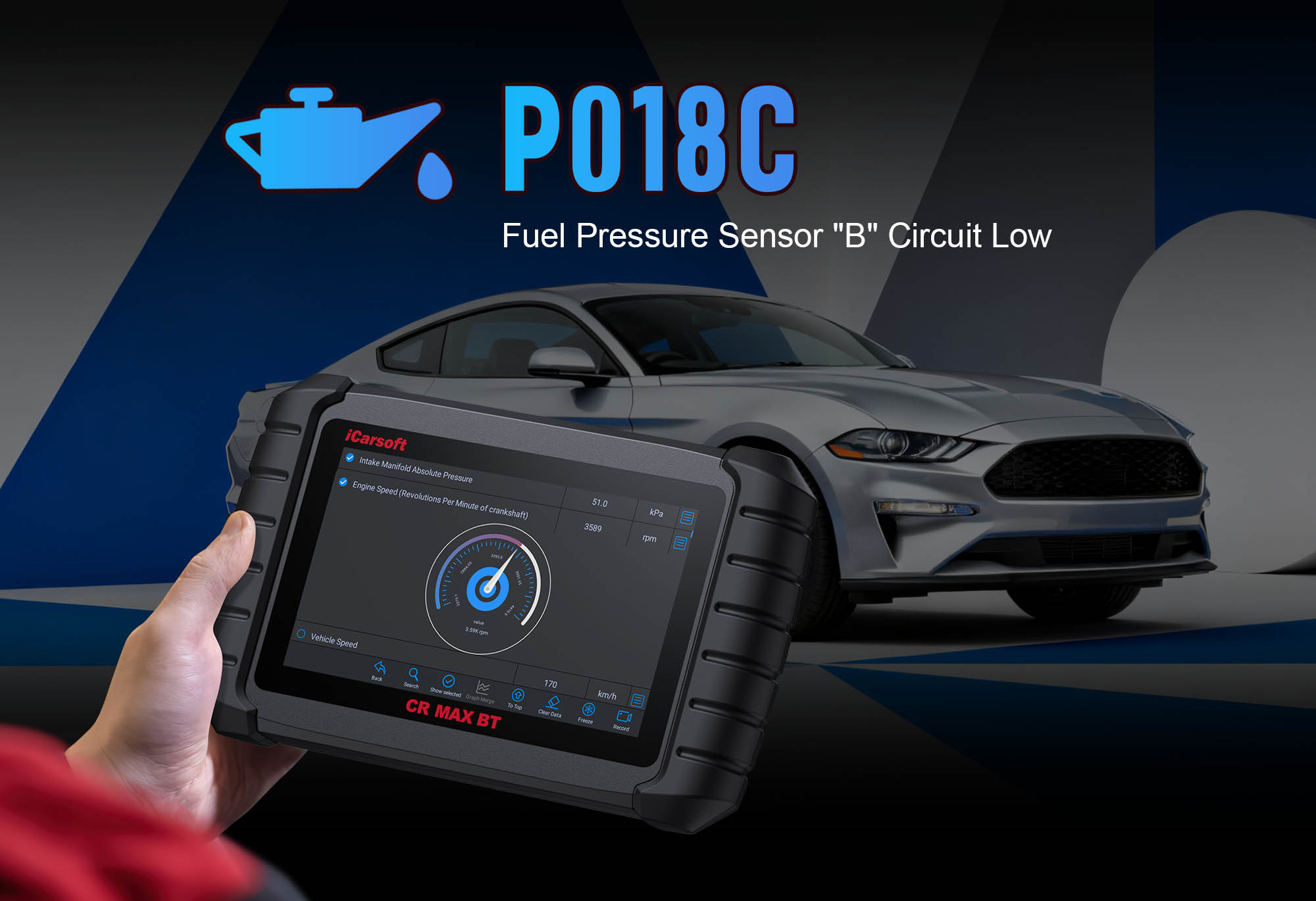Understand & Fix P228D: Fuel Pressure Regulator 1 Performance (Bank 1) with iCarsoft CR Ultra P
If your vehicle experiences rough idle, reduced acceleration, or a persistent check engine light, a diagnostic scan will likely return P228D. This OBD-II code stands for "Fuel Pressure Regulator 1 Performance (Bank 1)"—a critical fault indicating the Engine Control Module (ECM) has detected abnormal fuel pressure regulation. The fuel pressure regulator (FPR) controls the pressure of fuel delivered to the injectors; poor performance can lead to lean/rich fuel mixtures, engine misfires, or even damage to the fuel system.
Basic scanners might only flag a "fuel pressure issue" but can’t measure real-time pressure, test regulator responsiveness, or validate fuel system integrity—leaving you guessing between a faulty FPR, clogged injectors, or a weak fuel pump. The iCarsoft CR Ultra P, with its OE-level fuel system diagnostics, bi-directional control, and live data tracking, solves this. Below, we break down P228D, its causes, symptoms, step-by-step resolution, and 8 FAQs to answer common troubleshooting questions.
What Is P228D?
P228D targets the primary fuel pressure regulator (Bank 1), which maintains consistent fuel pressure (typically 40–60 psi) for optimal injector performance. The FPR adjusts pressure based on engine load: higher pressure during acceleration, lower pressure at idle. The ECM triggers P228D when it detects pressure deviations beyond the expected range—either too high (rich mixture) or too low (lean mixture)—even after the regulator attempts to correct it.
Key Symptoms of P228D
-
Illuminated Check Engine Light: The primary indicator, often paired with codes like P0087 (low fuel pressure) or P0089 (fuel pressure regulator performance).
-
Rough Idle & Misfires: Inconsistent fuel pressure causes incomplete combustion, leading to engine shaking at idle.
-
Reduced Acceleration: Insufficient fuel pressure limits power delivery during acceleration.
-
Poor Fuel Economy: A faulty FPR disrupts the air/fuel mixture, wasting fuel.
-
Hard Starting: Low fuel pressure makes it difficult for the engine to start, especially in cold weather.
-
Stalling Risk: Severe pressure deviations can cause the engine to stall while driving.
Common Causes of P228D
|
Cause
|
Description
|
|
Faulty Fuel Pressure Regulator
|
A worn or stuck FPR fails to adjust pressure correctly.
|
|
Fuel System Contamination
|
Dirt, debris, or old fuel clogs the FPR valve or injectors.
|
|
Weak Fuel Pump
|
A failing pump can’t maintain the required pressure, overworking the FPR.
|
|
Leaking Fuel Lines/Connectors
|
Leaks reduce system pressure, triggering the fault.
|
|
Wiring/Connector Issues
|
Frayed wires or corroded connectors disrupt communication between the FPR and ECM.
|
|
ECM Malfunction
|
Rarely, the ECM fails to send accurate commands to the FPR, leading to performance issues.
|
Why iCarsoft CR Ultra P Excels at Diagnosing P228D
The CR Ultra P outperforms basic tools with features tailored to fuel system diagnostics:
Real-Time Fuel Pressure Tracking
Monitors fuel pressure at idle, acceleration, and load, highlighting deviations from specs.
Bi-Directional FPR Testing
Activates the regulator manually to verify responsiveness, distinguishing FPR faults from pump or wiring issues.
Fuel System Validation
Checks fuel pump output, injector pulse width, and pressure retention to rule out related components.
Topology Mapping
Visualizes the fuel system wiring and connectors, making leaks or damage easy to locate.
Global Vehicle Coverage
Supports 200+ brands (Ford, Toyota, BMW, Audi, etc.) and 2018+ models with advanced fuel systems.
41 Hot Service Functions
Includes fuel system reset, injector coding, and pressure regulator calibration—critical for post-repair validation.
Step-by-Step: Diagnose P228D with iCarsoft CR Ultra P
-
Confirm P228D & Gather Data
Plug the CR Ultra P into the OBD-II port, power on, and select AutoVIN Identify to retrieve your vehicle’s specs.
Navigate to Engine > Fault Codes > Read Codes to confirm P228D. Tap Code Details for insights (e.g., "Ford F-150: Fuel Pressure Regulator 1 Performance; Pressure: 30 psi (Idle), Expected: 45–55 psi; Check FPR or Fuel Pump").
-
Analyze Live Fuel Pressure Data
Go to Engine > Live Data > Fuel System and monitor three key metrics:
1. Fuel Rail Pressure: At idle, should match OEM specs (e.g., 45–55 psi). Deviations >10 psi = fault.
2. Fuel Pump Duty Cycle: Should adjust with engine load. A stuck duty cycle = pump or FPR issue.
3. Short-Term/Fuel Trim (STFT/LTFT): Positive values (+10%+) = lean mixture (low pressure); negative values (-10%+) = rich mixture (high pressure).
-
Test the Fuel Pressure Regulator
1. Use Bi-Directional Control > Fuel Pressure Regulator Test: Send commands to adjust pressure (e.g., increase to 60 psi, decrease to 40 psi). No pressure change = faulty FPR.
2. Locate the FPR: Use the CR Ultra P’s Component Location tool (typically on the fuel rail or intake manifold).
3. Visual & Vacuum Check: Inspect for leaks or contamination. For vacuum-operated FPRs, use the CR Ultra P’s Vacuum Test to check line integrity.
-
Inspect Fuel Pump, Lines & Injectors
1. Fuel Pump Check: Navigate to Live Data > Fuel Pump Output to verify pressure (should meet specs). Low output = failing pump.
2. Fuel Line Inspection: Visually check for leaks/corrosion. Use Pressure Retention Test to confirm no pressure drop after shutdown.
3. Injector Check: Run Engine > Special Functions > Injector Balance Test to ensure even function—clogged injectors mimic FPR issues.
-
Repair & Clear the Code
- Replace the FPR if tests fail (use OEM-compatible parts).
- Repair fuel leaks, replace a weak pump, or clean clogged injectors as needed.
- Use the CR Ultra P to Clear Codes and run a System Check to confirm P228D is resolved.
FAQs: P228D Troubleshooting
-
Can I drive with P228D?
Short trips are possible, but long-term driving risks engine misfires and fuel system damage. Use the CR Ultra P to monitor fuel pressure—if deviations exceed 15 psi, avoid driving until repairs are done.
-
How much does it cost to fix P228D?
A new fuel pressure regulator costs $80–$200, plus $150–$300 for labor. Using the CR Ultra P to diagnose yourself saves on shop diagnostic fees ($100–$150).
-
Why does P228D keep returning after clearing it?
The root cause wasn’t fixed. Common culprits: unaddressed fuel leaks, a weak fuel pump, or contaminated fuel. Use the CR Ultra P’s History Log to track recurrence patterns (e.g., after refueling = bad fuel).
-
Is P228D caused by bad fuel?
Yes—contaminated or low-quality fuel can clog the FPR valve. Drain old fuel, refill with premium fuel, and use the CR Ultra P’s Fuel System Clean function (if available) to clear deposits.
-
How do I distinguish between a faulty FPR and fuel pump?
Use live data: Low pressure + unresponsive FPR test = faulty FPR; Low pressure + low fuel pump output = failing pump.
-
Do I need to calibrate the FPR after replacement?
Yes—use the CR Ultra P’s Fuel Pressure Regulator Calibration (under Special Functions) to sync the new FPR with the ECM for accurate pressure control.
-
Can a dirty air filter cause P228D?
Indirectly—a clogged air filter increases engine load, forcing the FPR to work harder. Use the CR Ultra P’s Intake Air Flow (IAF) data to check: low IAF = dirty filter.
-
Will P228D fail an emissions test?
Yes—erratic fuel pressure disrupts the air/fuel mixture, increasing emissions. Clear P228D with the CR Ultra P, drive 50+ miles to reset readiness monitors, and retest.
Conclusion
P228D’s fuel pressure regulator performance issue threatens engine performance and fuel system longevity. The iCarsoft CR Ultra P simplifies diagnosis with real-time pressure tracking, bi-directional tests, and system validation, ensuring you fix the root cause (not just the code).
With 200+ brand support and user-friendly tools, the CR Ultra P is essential for DIYers and mechanics. Resolve P228D, restore power and fuel efficiency, and protect your vehicle—all with one professional-grade diagnostic tool.





